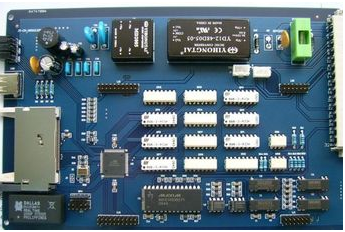For the PCB electronics industry, according to industry surveys, the most fatal weakness of the electroless tin coating is its easy discoloration (easy to be oxidized or deliquescent), poor solderability, which leads to difficult soldering, and high impedance which leads to poor electrical conductivity or poor overall board performance. Stable and easy to grow tin whiskers can cause short circuit of PCB circuit and even burn out or fire event.
It is reported that the first domestic research on chemical tin plating was Kunming University of Science and Technology in the early 1990s, followed by Guangzhou Tongqian Chemical (enterprise) in the late 1990s. Up to now, the industry has recognized that these two institutions are The best. Among them, according to our contact screening surveys, experimental observations and long-term endurance tests of many companies, it is confirmed that the tin-plated layer of Tongqian Chemical is a pure tin layer with low resistivity,

and the quality of conductivity and brazing can be guaranteed to a high level. No wonder they dare to guarantee to the outside that the coating can keep its color for one year, no blistering, no peeling, and permanent tin whisker without any sealing and anti-tarnish protection.
Later, when the entire social production industry developed to a certain extent, many subsequent participants often copied each other. In fact, a considerable number of companies themselves did not have the R&D or initiative capabilities themselves. Therefore, many products and their users’ electronic products (circuit boards) The bottom of the board or the overall electronic product) performance is poor, and the main reason for the poor performance is the impedance of the PCB circuit board, because when the unqualified electroless tinning technology is in use, it is plated on the PCB circuit board. The tin is not really pure tin (or pure metal element), but a compound of tin (that is, it is not a metal element at all, but a metal compound, oxide or halide, or more directly, it is a non-metal substance ) Or a mixture of tin compound and tin metal element, but it is difficult to find with the naked eye...
Because the main circuit of the PCB circuit board is copper foil, there is a tin-plated layer on the solder joints of the copper foil, and the electronic components are soldered on the tin-plated layer by solder paste (or solder wire). In fact, the solder paste is melting. The state soldered between the electronic component and the tin plating layer is metal tin (that is, the metal element with good conductivity), so it can be pointed out simply that the electronic components are connected to the copper foil at the bottom of the PCB through the tin plating layer, so the tin plating layer The purity and impedance of the instrument is the key; but before the electronic components are plugged in, when we directly use the instrument to detect the impedance, in fact, the two ends of the instrument probe (or called the test lead) first touch the copper foil on the bottom of the PCB board. The tin plating on the surface is then connected to the copper foil at the bottom of the PCB to communicate the current. Therefore, tin plating is the key, the key that affects the impedance and the key that affects the performance of the entire PCB, and it is also the key that is easy to be ignored.
As we all know, except for the simple substance of metal, its compounds are poor electrical conductors or even non-conductive (also, this is the key to the distribution capacity or spreading capacity in the circuit), so there is this kind of quasi-conductive rather than conductive in the tin plating layer In the case of tin compounds or mixtures, the existing resistivity or the resistivity after the electrolysis reaction due to future oxidation or damp and the corresponding impedance are quite high (enough to affect the level or signal transmission in the digital circuit) and The characteristic impedance is also not consistent. So it will affect the performance of the circuit board and the whole machine.
Therefore, as far as the current social production phenomenon is concerned, the coating material and performance on the bottom of the PCB are the most important and the most direct reason that affects the characteristic impedance of the entire PCB. Variability, so the worrying impact of its impedance has become more invisible and changeable. The main reasons for its concealment are: firstly it cannot be seen by the naked eye (including its changes), and secondly it cannot be measured constantly, because it has The variability changes with time and environmental humidity, so it is always easy to be ignored.